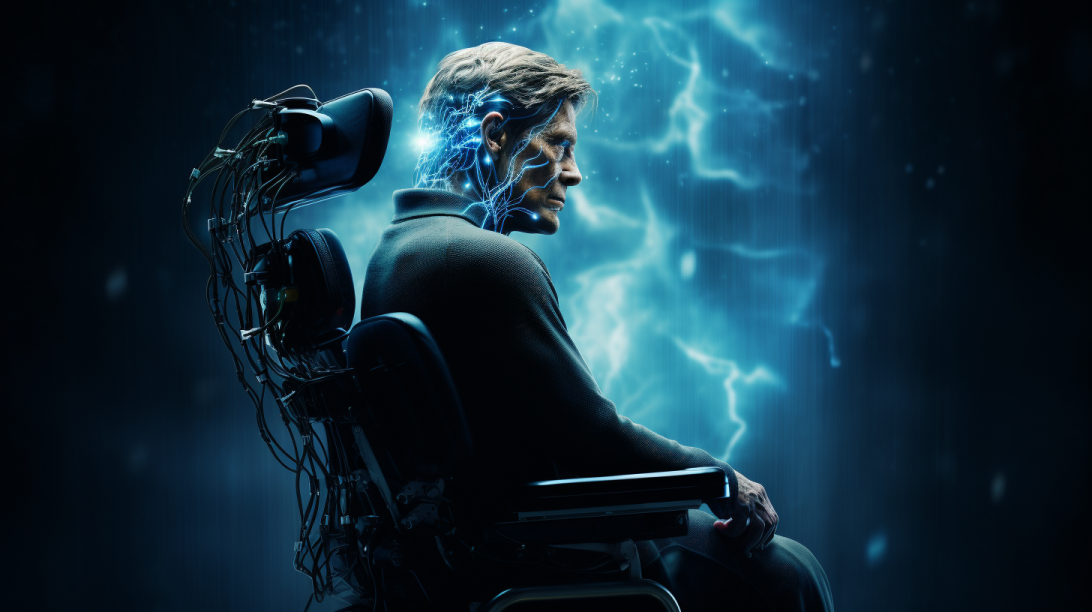Photo was created by Webthat using MidJourney
In a groundbreaking leap towards the future, Elon Musk’s Neuralink is gearing up for its inaugural clinical trial, offering new hope to those grappling with paralysis. This trailblazing venture, known as the Precise Robotically Implanted Brain-Computer Interface (PRIME), represents a monumental step in merging technology and human capability. In this article, we’ll delve into the details of Neuralink’s first clinical trial and how you can participate.
1. The Quest for Participants
Neuralink’s journey into uncharted territory begins with the quest for willing participants. The company, founded by the visionary entrepreneur Elon Musk, recently secured FDA approval to implant brain chips in humans. This achievement opens the door to a new era of possibilities for those afflicted by paralysis.
2. Navigating the Regulatory Landscape
To ensure ethical standards are upheld, Neuralink has received approval from an Institutional Review Board. Additionally, they have established a hospital site dedicated to participant recruitment. This commitment to rigorous oversight ensures that the clinical trial adheres to strict ethical and safety guidelines.
3. The Promise of Brain-Computer Interface (BCI)
The core objective of PRIME is to grant individuals with paralysis the power to control a computer cursor or keyboard through their thoughts alone. This audacious goal could revolutionize the lives of those who have long yearned for a way to regain control and independence.
4. The PRIME Study: A Six-Year Journey
PRIME is a six-year study designed to evaluate the safety of the implant and surgical robot. It also aims to assess the overall functionality of the brain-computer interface software. This comprehensive approach prioritizes safety and effectiveness, paving the way for a transformative technology.
Related Reading: AI Terminology: Your Ultimate Guide to Essential Understanding
5. The Surgical Procedure
Eligible participants will undergo a surgical procedure performed by the R1 Robot. This robotic marvel will surgically place the N1 Implant into a specific region of the brain responsible for controlling movement intention. Once in place, the N1 Implant will record and wirelessly transmit brain signals to an app, effectively decoding the user’s movement intentions.
6. Neuralink’s Milestone Announcement
In an exciting development, Neuralink recently announced receiving approval from an independent institutional review board. This news marks a significant step towards realizing the potential of BCIs.
What to Expect as a Participant
So, what can participants in Neuralink’s study anticipate?
Related Reading: AI-Generated Papers: Chinese Students Facing Degree Loss
7. Navigating the N1 Implant and N1 User App
Participants will be tasked with using the N1 Implant and the N1 User App to control a computer. They will also provide valuable feedback on the system’s functionality. This hands-on experience is a crucial aspect of the study.
8. The Marvel of Surgical Precision
Neuralink’s surgical robot is an engineering marvel, designed for the precise embedding of the implant and its 64 ultra-thin, flexible threads equipped with 1,024 electrodes. The robot employs optical coherence tomography for non-invasive brain tissue imaging and a needle as thin as a human hair to insert the threads with pinpoint accuracy.
9. Unlocking the Potential
The Neuralink 1 implant is a marvel in itself. It comprises multiple chips, a wireless battery, and other electronics securely encased in a device roughly the size of a large coin. Ultra-thin threads extend from the implant, penetrating directly into the brain. These signals are transmitted via Bluetooth to a brain-computer interface, enabling users to control onscreen cursors or manipulate robotic limbs with their thoughts.
Related Reading: Eye Care: Innovations in Technology and Vision Enhancement
10. A Fitbit for Your Brain
Elon Musk aptly described Neuralink’s vision as akin to having a “Fitbit” in your skull. This device, with tiny wires linked to your brain, could empower individuals with tetraplegia or quadriplegia to control a computer, mouse, phone, or any device through mere thought.
11. Beyond Paralysis: Ambitious Goals
Neuralink’s aspirations extend far beyond aiding paralyzed individuals. They envision a future where full mobility and sight restoration become realities. These ambitious goals could change the lives of countless individuals worldwide.
Joining the Journey: What You Need to Know
If you’re considering participating in Neuralink’s clinical trial, here’s what you need to know:
12. A Six-Year Commitment
Neuralink’s study is a significant commitment, spanning six years. Participants will undergo nearly two dozen follow-up visits during this period to monitor their progress and ensure the BCI functions as intended.
Related Reading: MTIF Cutting-edge Facilities: Empowering SMEs with Innovation
13. Regular Research Sessions
Participants will be expected to engage in a minimum of two research sessions per week, each lasting one hour. This involvement is essential for the success of the study.
14. Ongoing Care and Support
Neuralink is committed to providing follow-up care for 3.5 years, involving a total of 20 scheduled visits for participants. This comprehensive support demonstrates the company’s dedication to participant well-being.
15. Compensation and Eligibility
Participants should note that only study-related expenses, such as transportation, will be covered. Eligibility criteria include having quadriplegia due to spinal cord injury or ALS, being at least 22 years old, and having a consistent caregiver. Certain medical conditions and treatments may disqualify potential participants.
How to Join the Revolution
To embark on this remarkable journey and potentially change your life, you can apply to participate in Neuralink’s first clinical trial. Visit Neuralink’s website to fill out an application and determine your eligibility for current or future trials.
As we stand on the precipice of a groundbreaking era in medical technology, Neuralink’s first clinical trial offers hope, innovation, and the promise of a brighter future for those with paralysis. Join the movement and be a part of this extraordinary endeavor.


